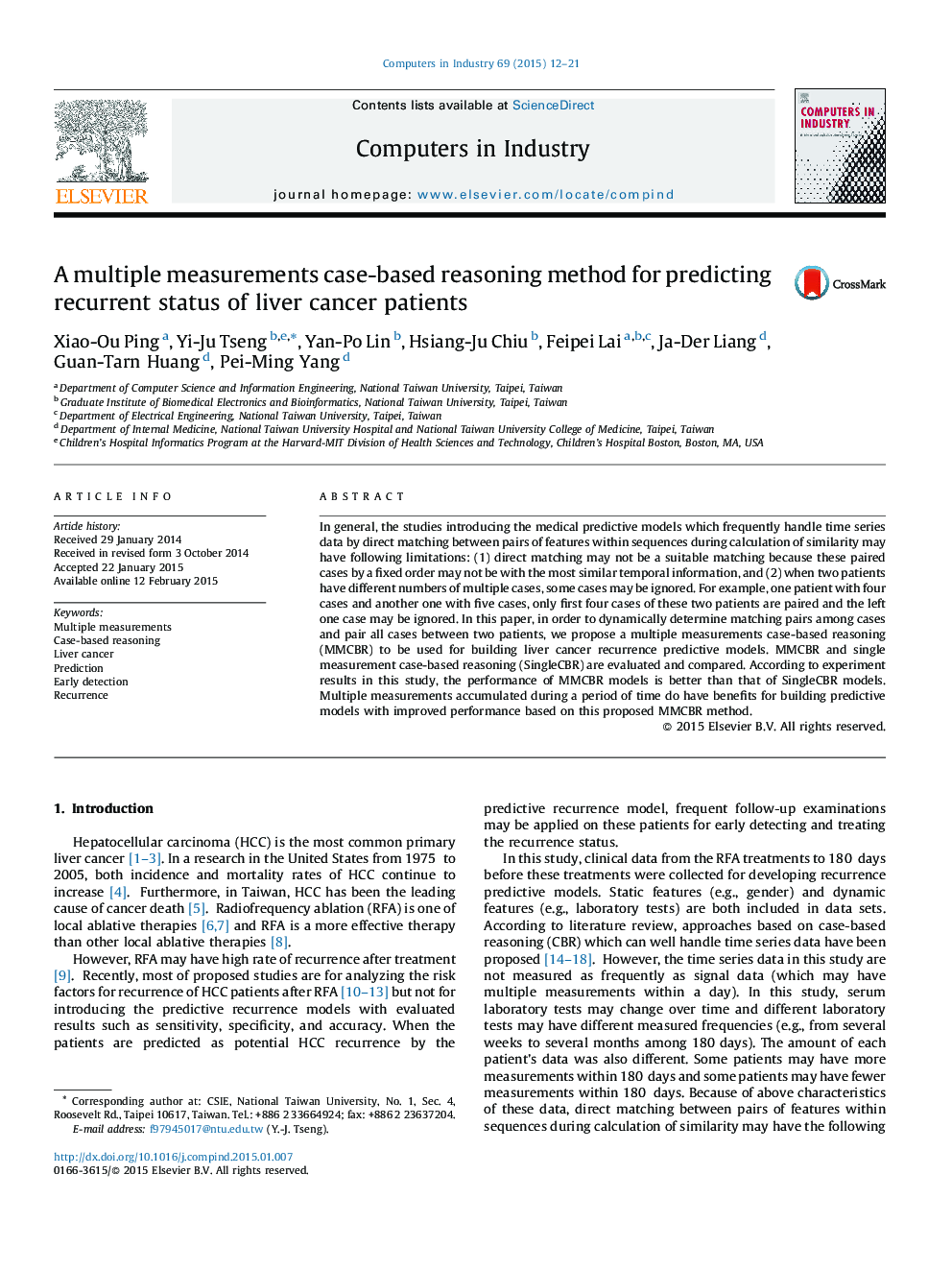| Article ID | Journal | Published Year | Pages | File Type |
|---|---|---|---|---|
| 508896 | Computers in Industry | 2015 | 10 Pages |
•CBR with multiple cases achieves better results than CBR with single case.•Multiple cases accumulated during a period of time do have valuable information.•Models with cases sampling in every 21 or 30 days achieve the best accuracy.•Feature selection method, Boruta, provides benefits for building predictive models.•Nipals PCA estimates missing values in data sets which produce stable performance.
In general, the studies introducing the medical predictive models which frequently handle time series data by direct matching between pairs of features within sequences during calculation of similarity may have following limitations: (1) direct matching may not be a suitable matching because these paired cases by a fixed order may not be with the most similar temporal information, and (2) when two patients have different numbers of multiple cases, some cases may be ignored. For example, one patient with four cases and another one with five cases, only first four cases of these two patients are paired and the left one case may be ignored. In this paper, in order to dynamically determine matching pairs among cases and pair all cases between two patients, we propose a multiple measurements case-based reasoning (MMCBR) to be used for building liver cancer recurrence predictive models. MMCBR and single measurement case-based reasoning (SingleCBR) are evaluated and compared. According to experiment results in this study, the performance of MMCBR models is better than that of SingleCBR models. Multiple measurements accumulated during a period of time do have benefits for building predictive models with improved performance based on this proposed MMCBR method.
Graphical abstractFigure optionsDownload full-size imageDownload as PowerPoint slide
